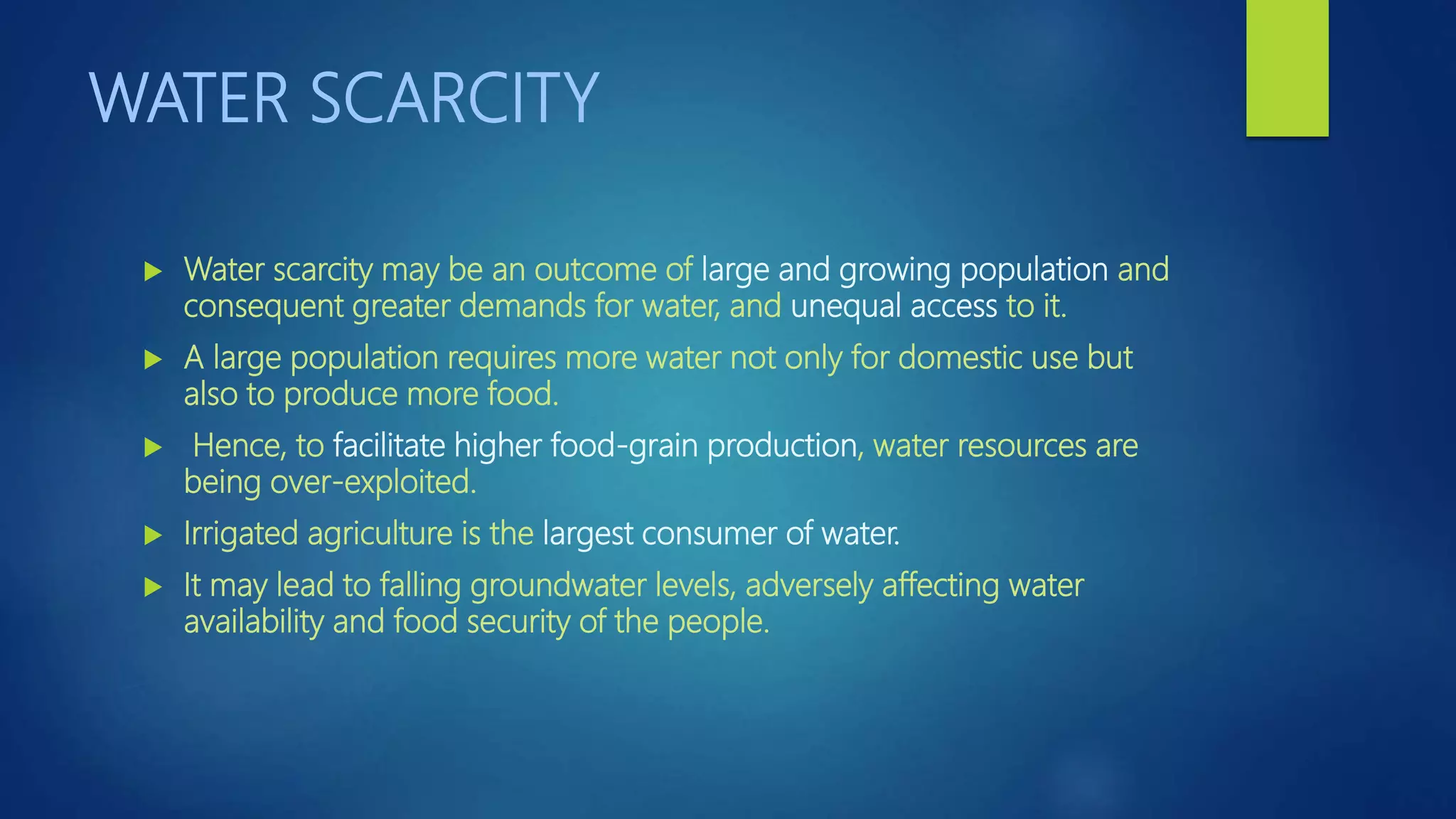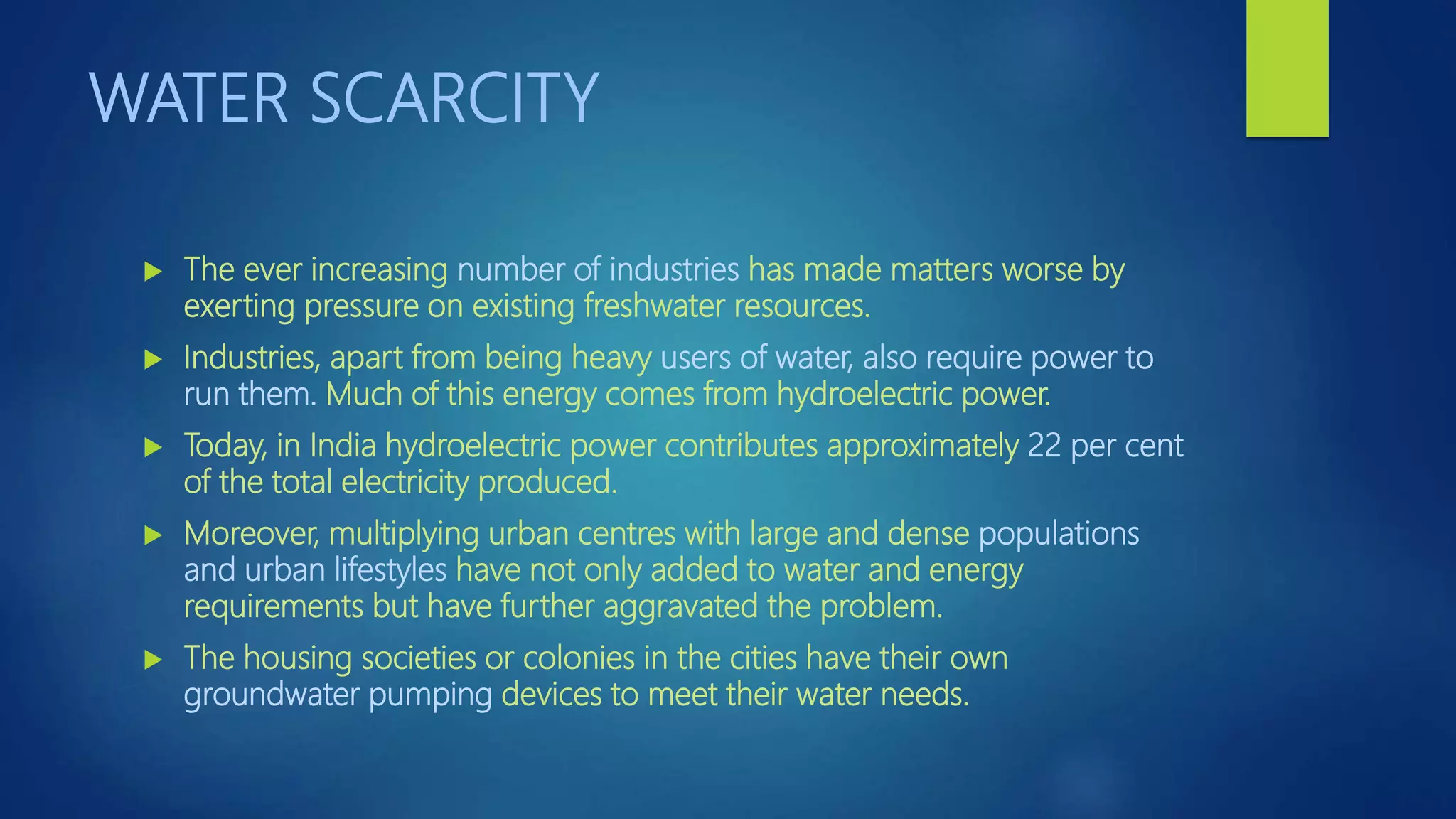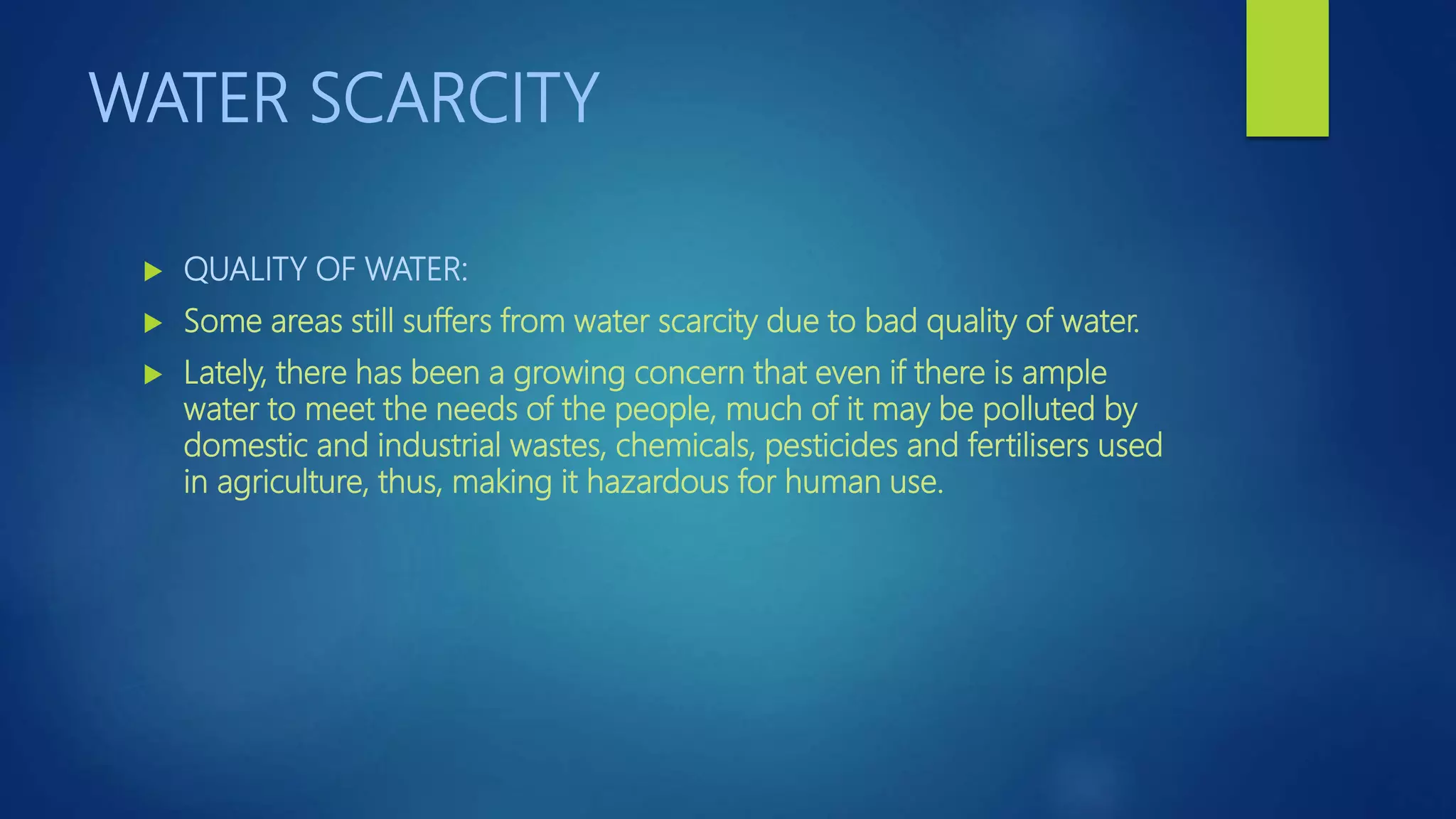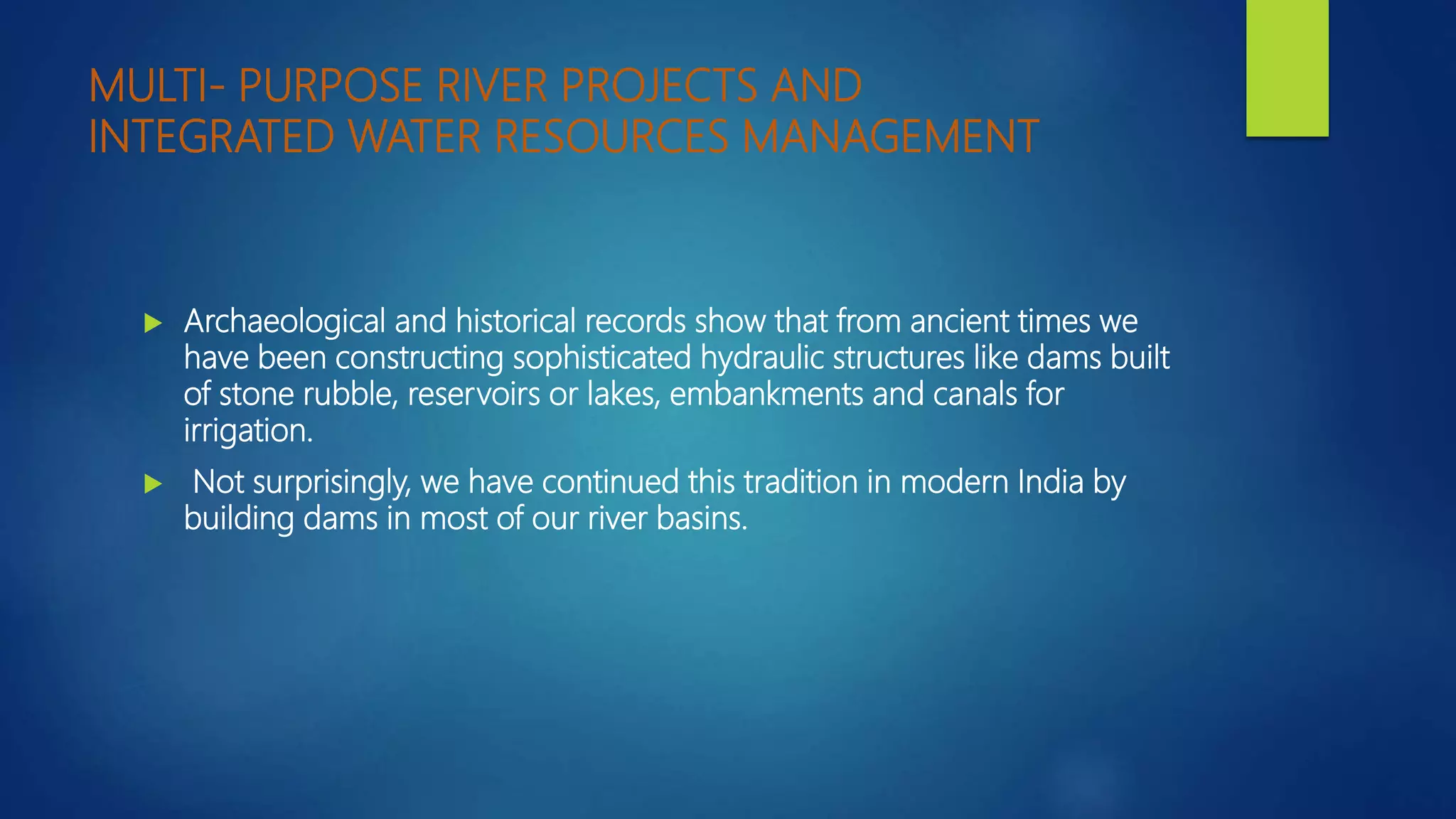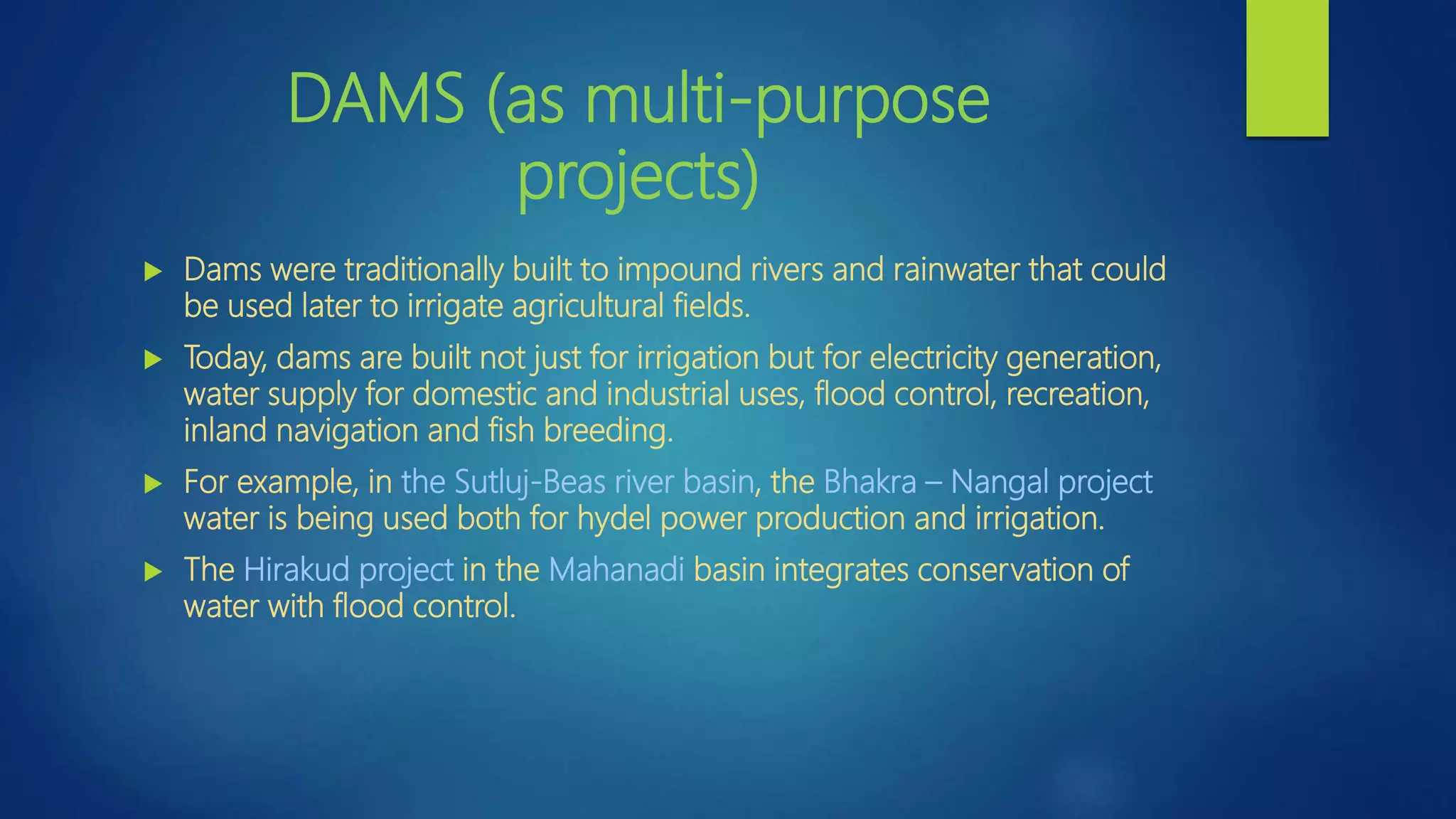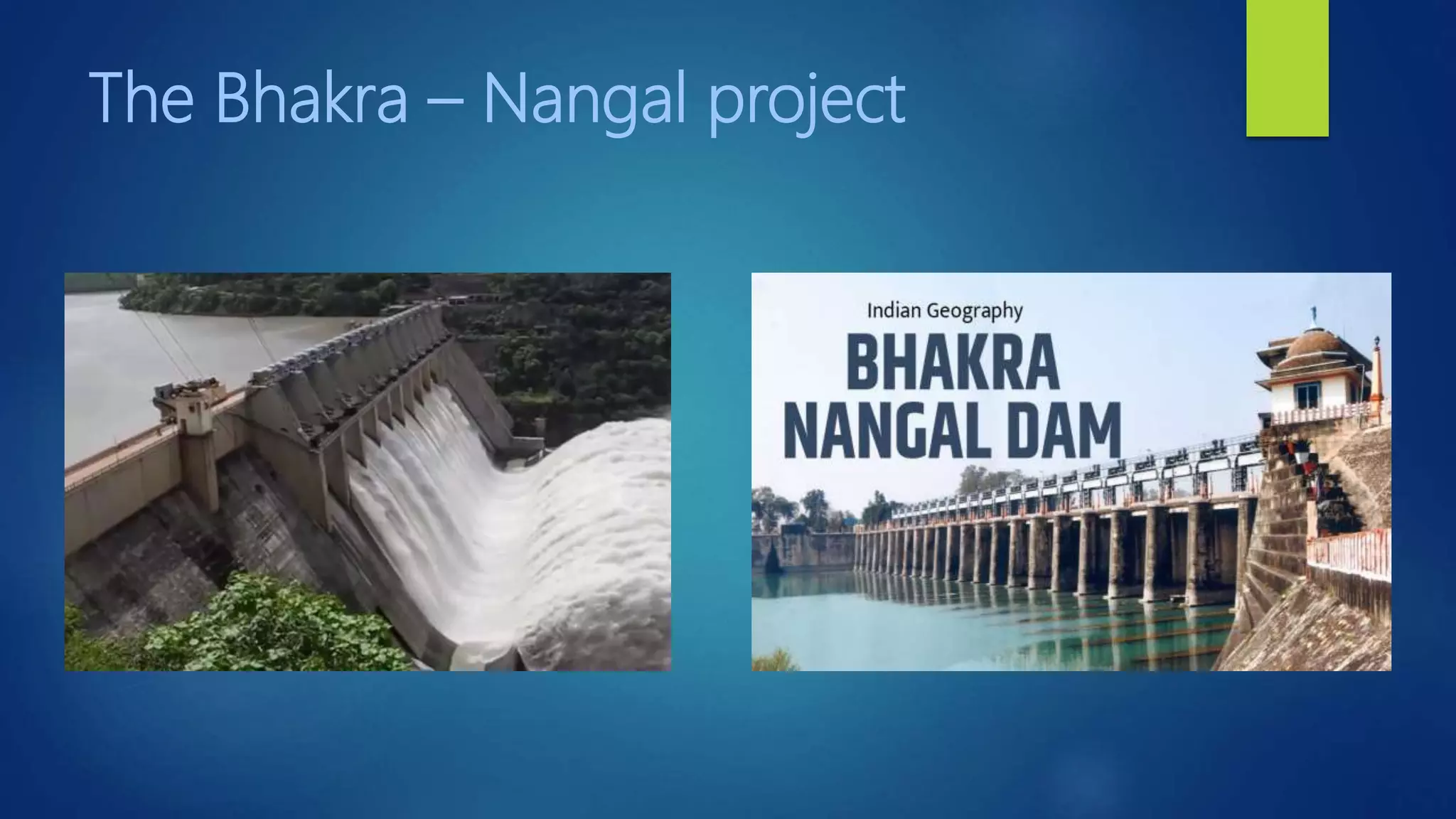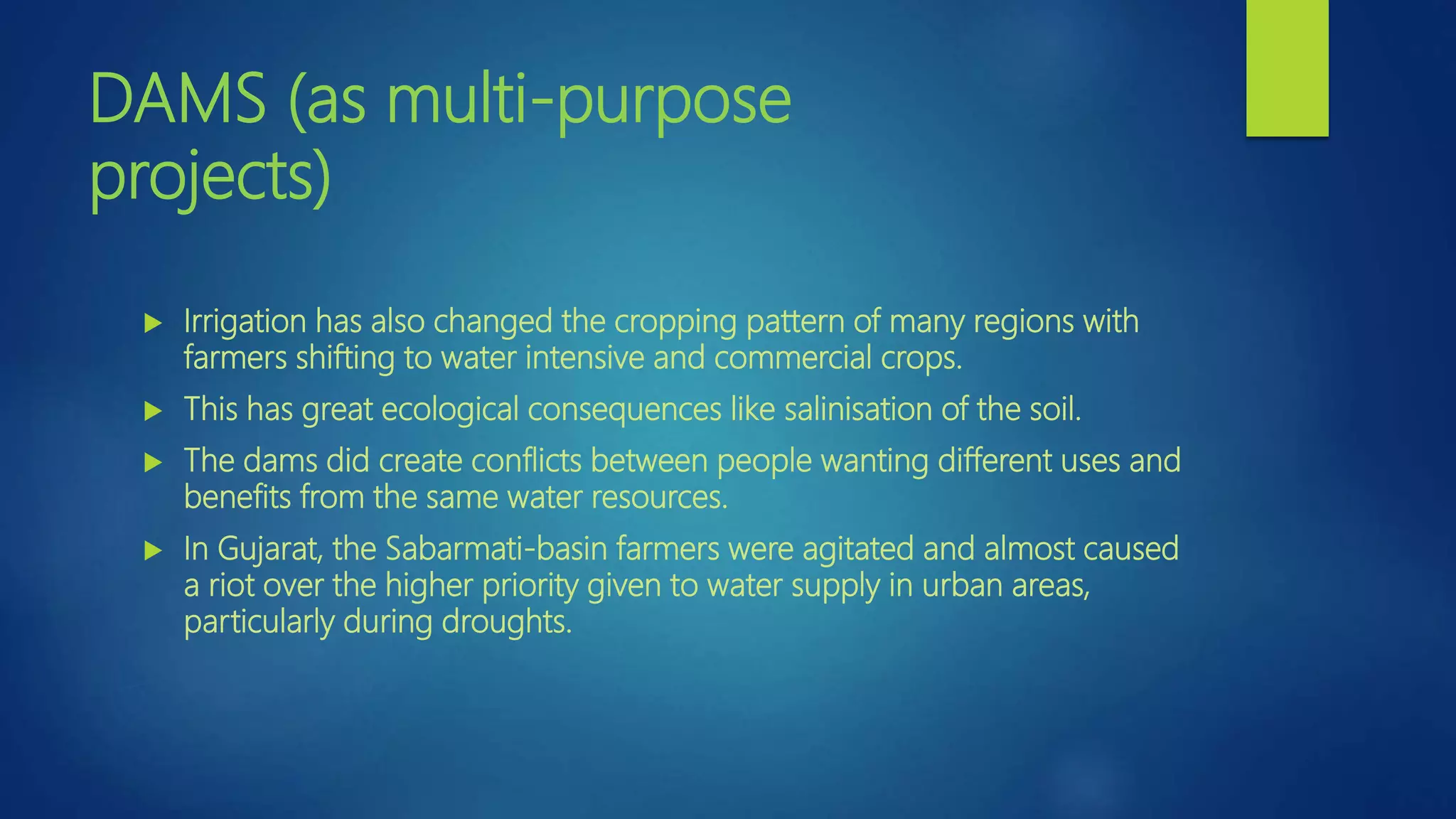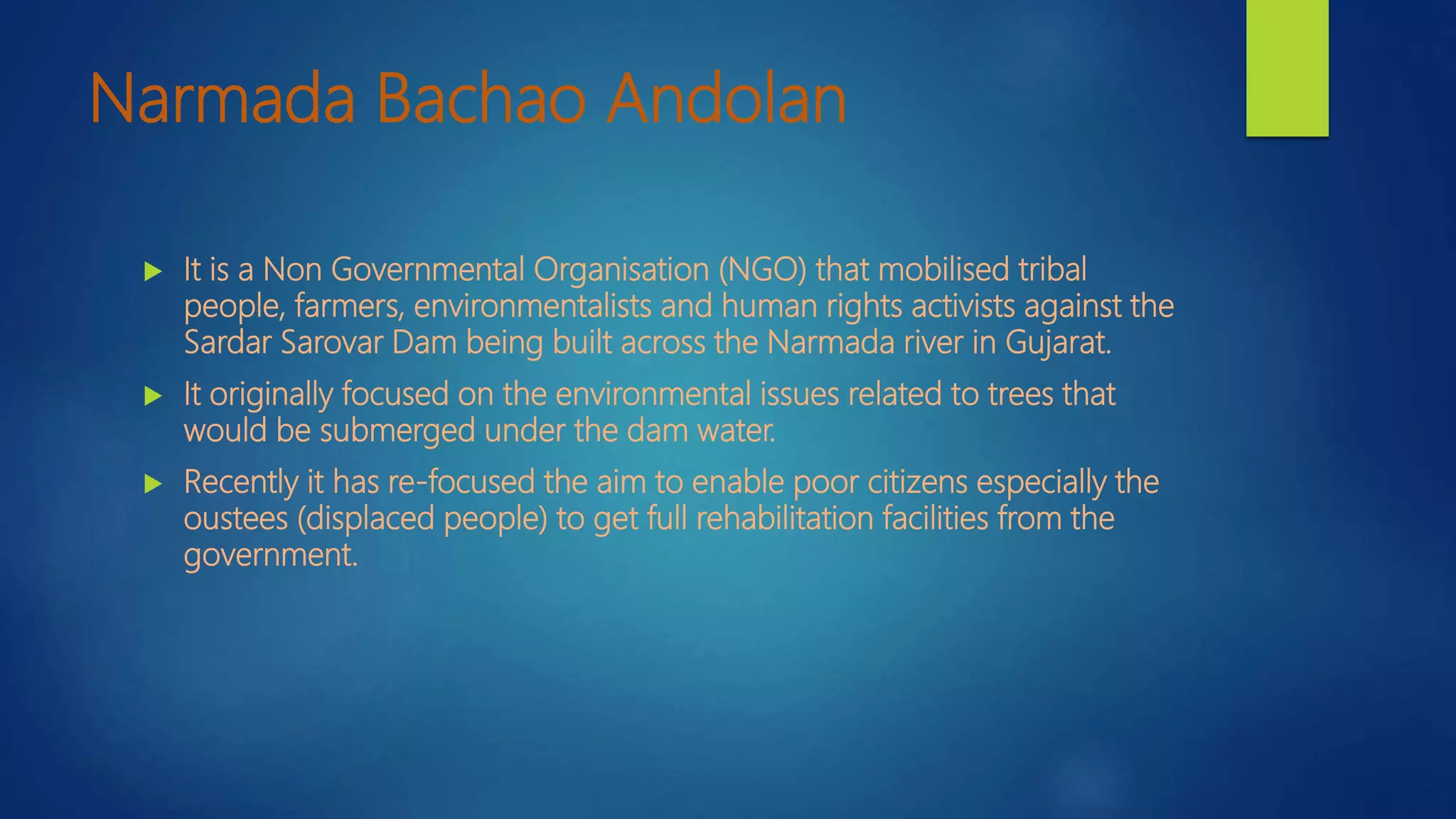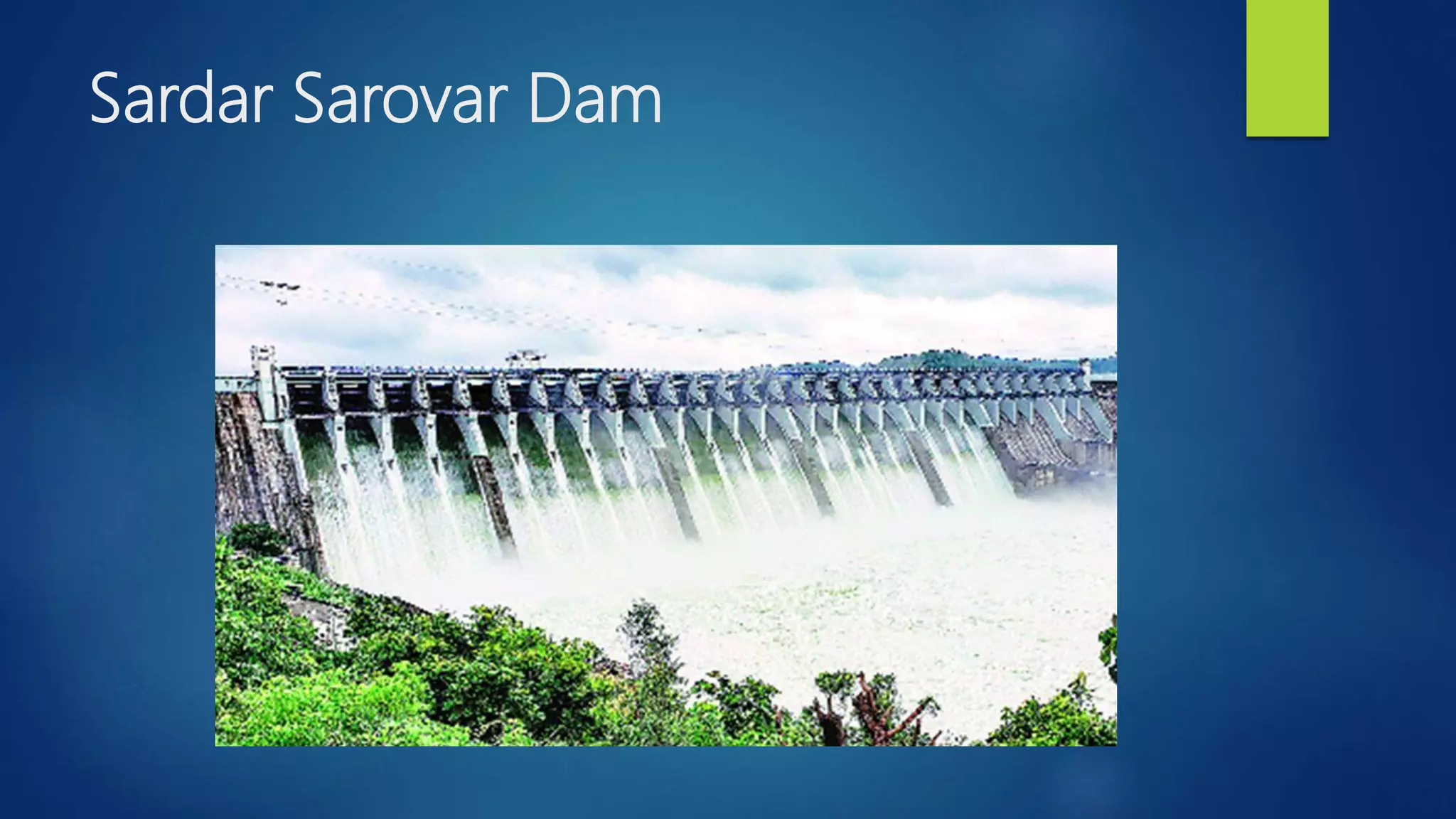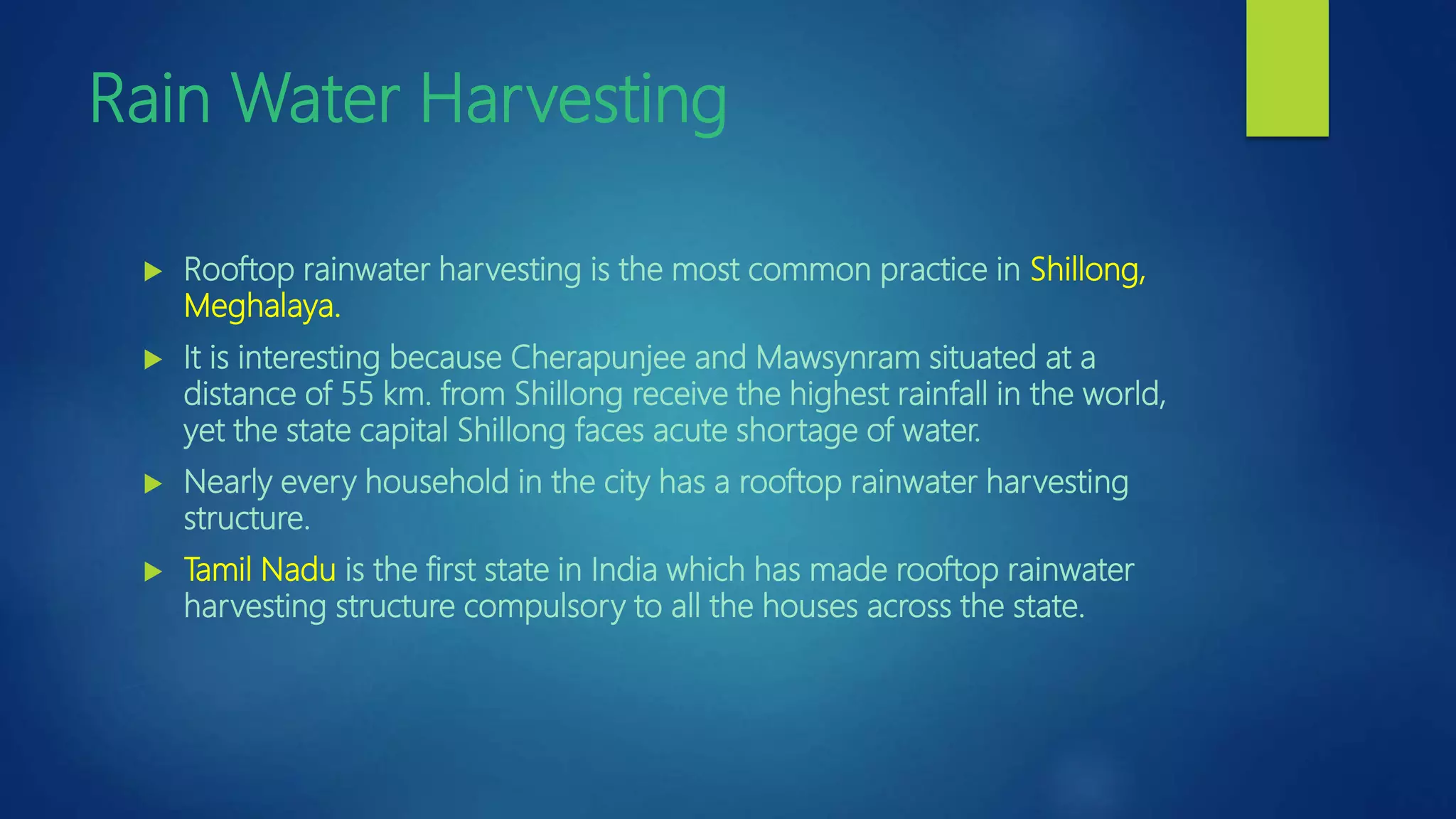The document discusses water resources and water scarcity issues in India. It provides the following key points:
1) Though water is a renewable resource, nearly 2 billion people will face absolute water scarcity by 2025 due to over-exploitation and unequal access.
2) Water scarcity is caused not just by low rainfall but also factors like population growth, over-exploitation for irrigation and industries, urbanization, and pollution.
3) Dams were built for multiple purposes like irrigation, power, and flood control after independence, but they fragmented rivers and displaced populations, causing conflicts over water usage.





